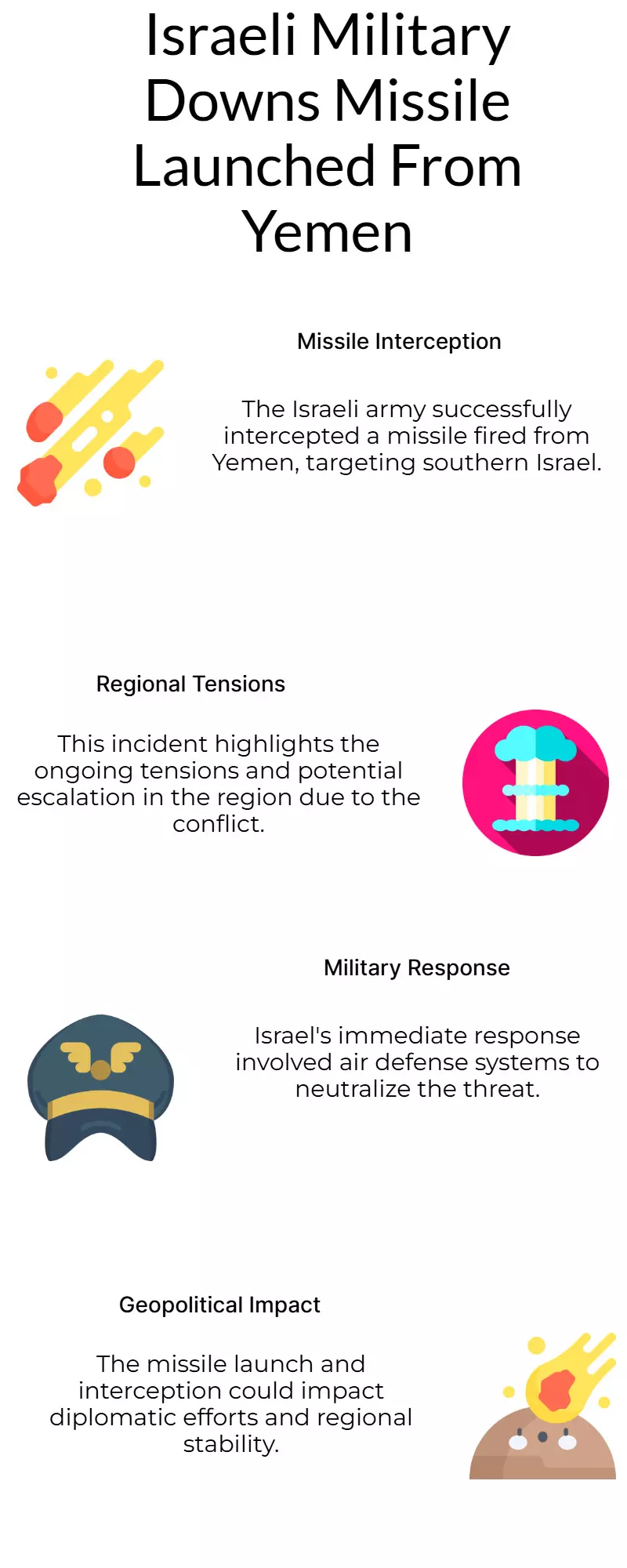Israeli Army Intercepts Missile Fired From Yemen Towards Southern Israel

By : Sandhya
The Israeli military announced on Saturday that it had detected a missile launched from Yemen aimed at southern Israel. In a post on X (formerly Twitter), the Israel Defense Forces (IDF) confirmed, “Sirens sounding in southern Israel following projectile fire from Yemen.”
According to a report by Reuters, the missile was “most likely successfully intercepted.” The IDF has not yet disclosed the origin of the projectile, but tensions with Yemen’s Iran-backed Houthi rebels suggest likely involvement.
Since the escalation of the Israel-Gaza conflict in October 2023, cross-border attacks between Israel and the Houthis—who control large parts of Yemen—have intensified. The Houthis have also targeted commercial vessels in the Red Sea, disrupting global trade routes.
In the past, Houthi military spokesperson Brig. Gen. Yahya Saree has warned that if the U.S. supports Israel against Iran, Houthi forces would retaliate by targeting American naval assets in the Red Sea. This warning came shortly before the U.S. launched airstrikes on three nuclear facilities in Iran—Natanz, Esfahan, and Fordow.
These developments followed Israeli Prime Minister Benjamin Netanyahu’s announcement of a strike on Iran’s nuclear enrichment program. Netanyahu vowed continued operations “for as many days as it takes.”
After nearly two weeks of sustained hostilities, Israel and Iran agreed to a ceasefire on June 24. The truce was confirmed just hours after former U.S. President Donald Trump stated on Truth Social that peace talks were nearing conclusion.
However, tensions remain high. Trump revealed that he had considered lifting sanctions on Iran but reversed course after receiving what he described as “a statement of anger, hatred, and disgust” from Iran’s Supreme Leader Ayatollah Ali Khamenei. He warned that Iran must rejoin the “World Order flow” or face worsening consequences.
As the situation in the region continues to evolve, Israel remains on high alert amid ongoing threats and volatile geopolitics.
